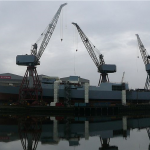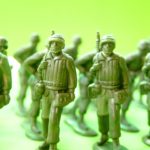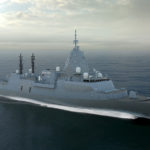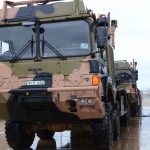The foundations of defence industry economics
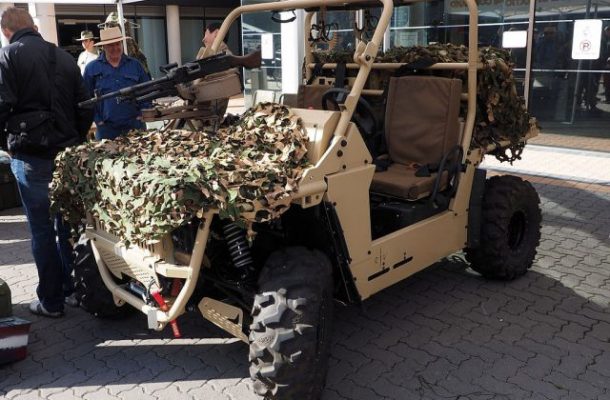
A notable feature of recent debate about investing in Defence capital equipment projects has been the differing views of stakeholders on how that investment affects the economy—for example here, here, here and here. So, let’s have a look at the concepts behind the economic impact of such projects before illustrating them with a case study in a future article.
When defence capital equipment projects are undertaken in Australia, their size is usually measured in terms of employment, sales and added value (basically sales minus the material and associated inputs bought from other industries). Each of these measures constitutes a form of economic benefit by adding to the value of what the nation produces.
Quite often, stakeholders are interested in how these measures play out at a state or regional level, where the economic effects of projects tend to be magnified. And stakeholder interest also turns to the individual contributions of prime contractors, companies in a project’s domestic supply chain and all those companies’ employees who spend their wages and salaries on consumer goods and services.
All this data can be generated using input-output (I-O) economic modelling. However, a purely I-O approach deals only with the economic benefits of projects. Economic costs aren’t considered.
Those costs take two main forms. One is the resources diverted from other areas of the economy—especially areas with higher levels of added value (or productivity)—or where the resources are in short supply. This includes drawing skilled labour away from other projects and industries rather than from the ranks of the long-term unemployed. To the extent that this occurs, a project’s expansion comes at the cost of contraction in other areas of the economy.
The second main form of economic cost arises from the fact that—excluding export projects whose costs are met by overseas customers—defence projects need to be paid for. That requires that the government raise taxes or reduce its expenditure elsewhere. Both actions detract from other areas of economic activity. Borrowing more money to pay for projects has its own costs and complications.
This form of cost might be partly offset by the tax revenue generated by equipment projects. However, as other areas of the economy—which also pay tax—shrink in response to economic costs, any net gain in government tax revenue will be smaller than it first appears.
From a broader, national welfare perspective, the adverse economic effects of raising revenue to pay for projects should be matched by the added national security provided by the capital equipment projects. Nonetheless, an economic cost is incurred and should be included in any study where jobs and growth are issues of interest.
Where Defence pays a price premium to ensure that its equipment is built or sustained in Australia rather than overseas, the government needs to raise even more revenue. Ostensibly, the extra economic costs involved should be offset by Australian industry receiving considerably more work than if the equipment had been produced abroad. Additional work should generate more tax revenue for government, helping to defray the economic costs a price premium imposes.
However, those benefits only apply to the extent that the additional industry resources that would have been employed had the equipment been built or sustained in-country couldn’t have been put to good use somewhere else in the economy.
In terms of broader national welfare, the economic costs associated with a price premium might be mitigated by a military–strategic advantage in the form of higher levels of industrial sovereignty. But again, such costs still exist and need to be identified if jobs and growth are the focus. Of course, the case for sovereignty must also be made.
Bringing all these points together, the economic benefits of defence projects will be higher when four conditions hold:
1. A high proportion of inputs used by projects—like raw materials, finished components and business services—are produced in Australia.
2. The projects and their Australian suppliers have higher levels of productivity than the projects and industries disadvantaged as a result of the government having to pay for capital equipment.
3. The project workforces consist predominantly of people with otherwise poor employment prospects.
4. The projects are internationally price competitive.
Absent from the discussion thus far are spillover effects. These are created if projects help to develop a skilled workforce and new technologies that can eventually be used by others to boost their productivity. However, spillovers can be difficult to achieve in practice and are even more difficult to quantify.
With the exception of spillovers, computable general equilibrium (CGE) modelling (here and here) is designed to explore the full range of economic benefits and costs described above—noting that no modelling is without its limitations. The primary role of this, or any other, economic modelling is to enable stakeholders to form their own views.
With that in mind, Part 2 of this article will look at how the results from I-O and CGE modelling compare, using a hypothetical example of a submarine build.
This article was published by The Strategist.
Rob Bourke is an associate with Canberra-based consulting company Cadence Economics and was formerly economic adviser to the Defence Capability Acquisition and Sustainment Group in the Department of Defence, where he worked extensively on the economics of industry capability development.


